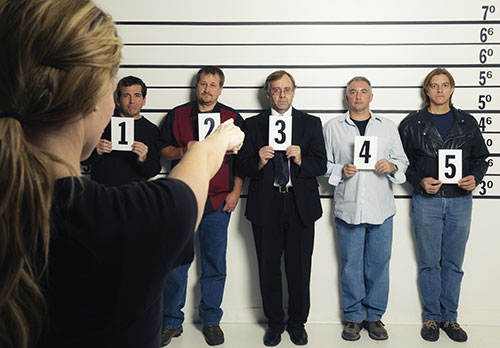Learn
Eyewitnesses
After ensuring that the scene is secure, law enforcement identify and separate the witnesses. The witnesses are separated so that they do not have an opportunity to create a story or engage in collusion prior to speaking with officers. Law enforcement should also separate witnesses from the immediate vicinity of the crime or victim to avoid cross-contamination.
Witnesses may be anyone from casual by-standers to family or close friends. Witness interviews must be handled carefully. Investigators should be aware of the psychological affecting the mental and emotional state of a person impact of the crime on the witness, especially in the case of a violent death, and always remain patient and courteous. The goal is to obtain as much reliable information as possible and avoid damaging the relationship between law enforcement and the witness.
After witnesses answer questions at the crime scene, they may be asked to come to the police station for additional questions or to identify a suspect in a lineup. Witnesses may also testify in court.
Witness testimony is used to gather a version (or multiple versions) of what happened at the scene, as well as information about the victim and person of interest's actions prior to the crime.
Questioning the Witness
The types of questions that witnesses are asked can influence their responses. Investigators should avoid "yes or no" questions and lean heavily on open-ended questions.
Knowledge Check #1
Which version of this question should be posed to a witness?
- Was the person wearing a blue shirt?
- What color shirt was the person wearing?
Answer: b. What color shirt was the person wearing? This question is open-ended and does not lead the witness.
Suspects in a Lineup
The following are true of a police lineup:
- Police will line a suspect up with other individuals who are not connected with the crime. Most of the time, the suspect and the four to five other people are lined up against a wall so that the witness may view them individually (in a sequential process) and as a group (in a simultaneous process) via a two-way glass/mirror.
- If a live lineup is not possible, a photo lineup may be completed. A photo of the suspect, along with photos of other individuals not connected with the case (often, six or more) are shown to the witness.
- It is a double-blind procedure, meaning neither the person administering the test, nor the eyewitness, are told which person is the true suspect. The eyewitness may identify the police suspect, but they are not told which person is the suspect. Telling either the person administering the test and the eyewitness who the true suspect is would taint or unfairly impact the results.
- Standard instructions given to the witness, including a statement that "the suspect may or may not be present in the lineup".
- The lineup should contain a blended composition so that the suspect does not stand out. For example, the suspect must not be the only one with a mustache or significant facial hair.
- The lineup procedure is fully documented via video and/or audio recording or written record.
- Confidence statements, where the witness articulates how certain he or she is in the identification made, are recorded immediately following the lineup.

Factors Influencing Recall
Many factors can affect the witness's ability to recall information from the scene:
- Age: Young children and elderly people have been shown to mistakenly identify a suspect in a lineup if the actual culprit is not present.
- Race: People are better at recognizing faces in their own race than those of other races (This is called the Cross Race Effect).
- Drugs: The use of drugs can impact a person's ability to recall the events of a crime, even if the person is no longer under the influence.
- Other witnesses, media, and investigators: Additional sources of information about the crime can influence a person's memory.
- Traumatic events: If the crime is particularly traumatic for the witness, his or her memory may be affected.
- Time: The longer a witness focuses on the suspect's face, the more he or she will be able to recall.
- Appearance: Highly attractive, highly unattractive, or distinctive features are more likely to be accurately recognized.
- Piercings and tattoos: Both piercings and tattoos aid witnesses in accurately recalling a person's appearance.
- Disguises: Hats and sunglasses make it more difficult for witnesses to accurately identify a suspect.
A Case of Mistaken Identity
While witness testimony can help investigators get a clearer picture of what happened at a crime scene, they are not considered reliable. According to The Innocence Project, "mistaken identifications are the leading factor in wrongful convictions." However, eyewitness accounts can have influence on the outcome of a trial or investigation. As forensic science has advanced, courts rely more on physical evidence than testimonial evidence.
The Innocence Project has put forth a list of reforms to improve the accuracy of eye-witness identification. Twenty-four states have enacted these reforms, which are listed on their page Eyewitness Identification Reform.